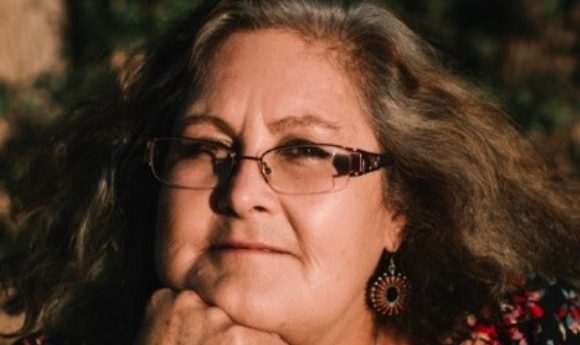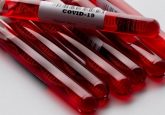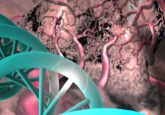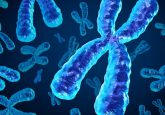Science in Fiction: an interview with Carol Potenza

Carol Potenza is a PhD of Biomedical Sciences, a published plant geneticist, and lecturer at New Mexico State University (NM, USA). Alongside her scientific career, Carol is the author of the award-winning book, “Hearts of the Missing,” a thrilling tale of ancestry, genetics, and murder. This World Book Day we spoke to Carol about her book and how she weaves the science of her career into the gripping narrative of her novel.
Would you like to tell us a bit about yourself, your life before writing and how you got into fiction writing?
I’ve wanted to be a scientist since I was a child. My undergraduate was science-based and I went directly into a PhD program at the University of California, San Diego, in Biomedical Sciences. At the time, molecular biology was the newest thing going; you’d get a gene and then do your dissertation work on it. I got married and had a family and, as is the case for a lot of people, you marry each other’s careers. My husband is a physician, so was earning a lot more than I did. We followed him back to New Mexico, his home state, and to Las Cruces, where New Mexico State University is located. I did my postdoctoral research in plant genetic engineering, and transitioned to a perma-doc, essentially continuing to use my molecular training in plant genetic engineering. I’ve also held a 2-year position at the United States Department of Agriculture (USDA) researching native grasses, worked at a drug-testing company, and taught biochemistry at NMSU. I was offered a full-time teaching position at the NMSU Department of Chemistry and Biochemistry about 6 and a half years ago.
About that time, my two children left for college and I stopped doing bench research. I soon realized I didn’t have enough to do on my weekends and evenings, so I started reading—a lot. After a couple of years, I thought, “I could write a book!” and started writing. When I finished this murder mystery: “Hearts of the Missing”, I entered it into competitions and it did well, so I submitted it to the Tony Hillerman prize—and won!
I decided to include science in my books because I’ve heard ‘write what you know’, and that was what I knew. My sister-in-law works on a Native American pueblo and she tells great stories about ghostly encounters and visions she’s had on the reservation. I wanted to merge the stories she told with mystery and science, so I set the book on a fictional reservation.
In the period when you were reading a lot before you started writing, what kind of books were you reading?
I’ve always enjoyed reading contemporary crime and thriller novels but found myself gravitating towards authors who put a lot of science in their books, like Michael Crichton, Robin Cook and Douglas Preston and Lincoln Child. I love how they integrate science grounded in truth, for example cloning and DNA in Jurassic Park, then spin it towards fiction so it’s difficult to separate the real from the imagined. These authors inspired me to take science based in reality, and then weave fiction and exaggeration around it.
19222
Do you think it’s important that the science is always grounded in truth or would you sometimes cut the corners to develop a plot point?
“Hearts of the Missing” is about ancestry and genetics, and a lot of what I included is completely grounded in truth. I try not to cut corners with the basic science. For example, I include information on human leucocyte antigens (HLAs) and transplants, then try to use relatable examples for people who may not have a scientific background. To explain this topic, I had a physician character in the book talk about how all cheetahs are so closely related, skin grafts and transplants between animals don’t get rejected. When my sister called me and said she understood the science because of the cheetahs, I knew I’d done my job.
It is obviously a difficult balance to strike between including this realistic and detailed scientific information but maintaining the feel of the book as an engaging work of fiction and not a lecture or research paper. How did you strike that balance?
I ask for feedback from people with and without scientific backgrounds. On the whole, there may be more depth of information in my book than some readers are familiar with, but I’ve had readers tell me they looked up the science because their interest was piqued. I do the same thing when I come across information in a story that is unfamiliar but interests me.
When you are writing, which direction does the science flow? Do you have pieces of science that you want to include throughout the book and work the plot towards that, or do you find yourself using it when you come to a situation in the plot that requires it?
It’s a bit of both. In the second book of my series, I was influenced by the Gold King Mine spill in Colorado. The U.S. Environmental Protection Agency tried to shore up the opening of the mine, but the whole thing gave-way allowing the release of millions of gallons of toxic waste into the Animas River watershed in Colorado and northern New Mexico. It even flowed through the Navajo Nation. The clean-up from this accident is enormous and ongoing. When I began researching microorganisms used in bioremediation, I found so much material. Did you know microorganisms and plants are used to clean up toxins like uranium? There are even organisms that scavenge gold. I then twisted the science and asked: What if one of these microorganisms could infect humans and extract their minerals? How could I use this idea in a book? Fortunately, a few doors down the hallway from my office, there’s a professor in my department who studies Zinc-scavenging proteins in microorganisms. He was key in helping me include the proper instrumentation and word choice, which lends authenticity and credibility to my writing.
Do you see the inclusion of science in your novels as an important service to society? To inspire people to take more of an interest in science and to potentially take it up themselves, perhaps as a vehicle for social or scientific change?
I didn’t see my writing as a vehicle for scientific change until I started doing book clubs for “Hearts of the Missing.” Readers are focusing on the story’s science and genetics and are telling me it’s made them start research on their family tree or get their DNA ancestry done. I don’t particularly want to be a force for social change because I’m not a very political person. I also think that when we’re talking about science, we should try and keep it as apolitical as possible.
A lot of the book focuses around Native American heritage, is this an area of America that you have a lot of personal experience with or is it more the identifiable genetic heritage that piqued your interest.
A lot of factors went into the selection of my setting. For example, Native American Tribes operate as sovereign nations under U.S. state and federal laws, which can lead to interesting situations and dilemmas. They have complex cultural and traditional practices that fascinate non-natives like me. I’m lucky because one of my sisters-in-law works as a police officer on a Native American Pueblo in New Mexico. She operates with sensitivity to the culture trying, if possible, not to pry into traditions the tribe wish to keep private. She’s provided wonderful inspiration for the main character in my book and is a great resource.
I’ve done a lot of trips to pueblos for feast days, or to do ride-a-longs, or to conduct interviews with people there. Like my sister-in-law and my protagonist in the book, I try to make sure I’m not prying or delving into areas of culture that they would prefer to stay secret. That helps maintain the ‘outsider’ aspect of my writing. I also have beta-readers who are Native American and who make sure I have remained sensitive to their traditions and culture. And if they ask me to change anything, I do. It’s key for me to remember that I am also an outsider writing about a culture that I did not grow up in.
Another of my sisters-in-law was a nurse on one of the pueblos. Through her, I found that a number of Native Americans don’t get their DNA ancestry done and aren’t on organ transplant lists because cultural tradition maintains a body must be buried whole. Through my sisters-in-law, I developed two key aspects of “Hearts of the Missing”: A non-native police officer who is an outsider and must navigate Native American culture, and the unique genetics of a people who have inhabited the North American continent for millennia.





